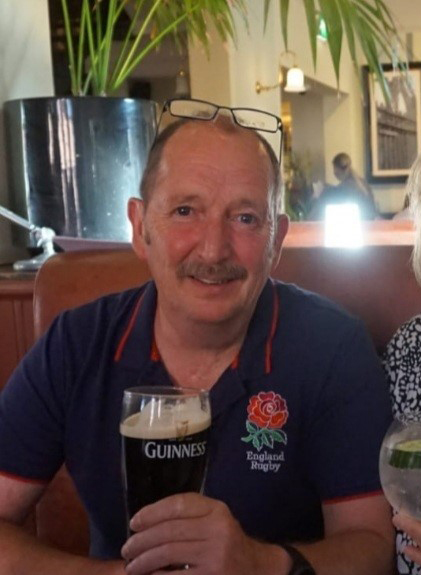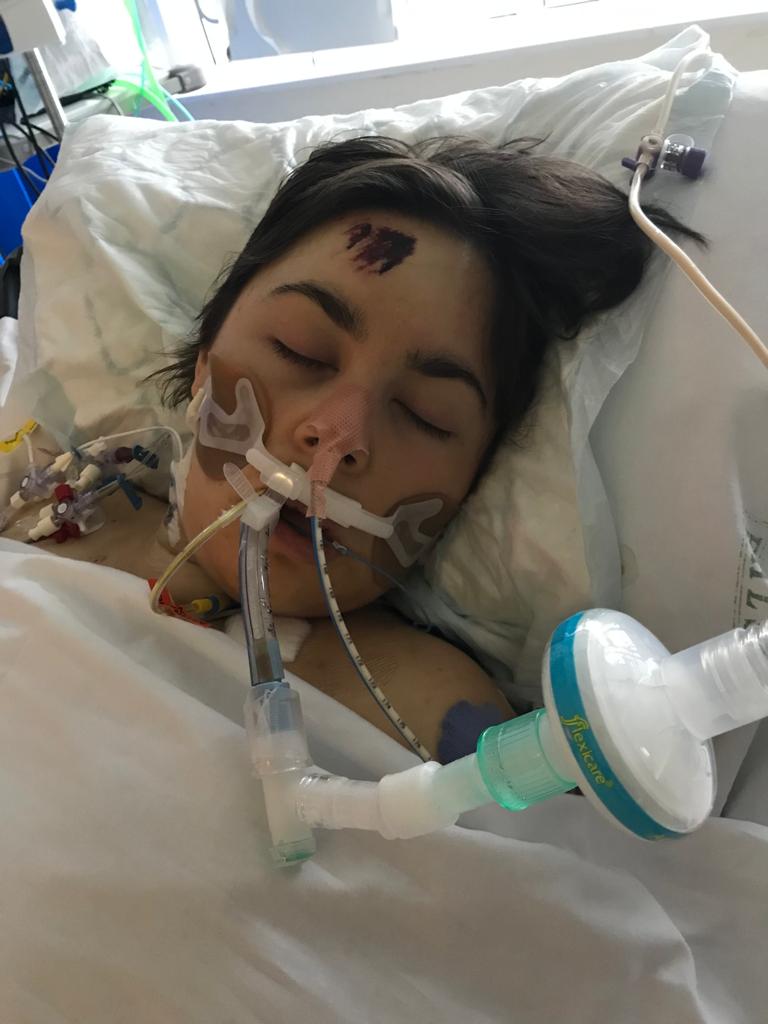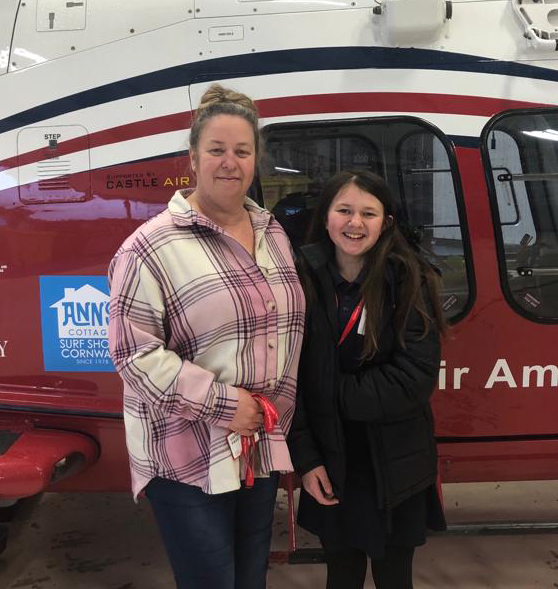A crews
view for
#HELI2
Why I’m looking forward to our second helicopter
Adam Smith, Unit Chief Pilot
It has many benefits both in terms of aviation and from a clinical perspective, and is the best suited aircraft for the critical care service that we provide. I’m very lucky that I get to fly it – but more importantly, this helicopter allows us to provide the very best solution possible for our clinical teams as they provide lifesaving support to those people who are critically ill or injured across Cornwall and the Isles of Scilly. Being able to provide the best possible care and the best possible outcome for the patient is the most important part of our service. The AW169 provides the clinical crew with 360-degree access to the patient and more room to treat them within the helicopter itself. Being a powerful aircraft with high weight limits, it means not only can we carry more fuel, so we can carry out back-to-back missions, but also the ability to carry a vast range of equipment, drugs, and lifesaving tools. When we need to airlift a child, it also means that there is space and the weight capacity to take a parent too, which we know can make all the difference. And it’s fast, flying at around 135 knots (155mph), meaning we can reach the scene or the hospital quickly.We not only serve the people of Cornwall but also the Isles of Scilly, and we are the only air ambulance service in the UK which crosses a wide stretch of ocean to reach patients. Safety is of course paramount, both for the patient and for our aircrew. Again, the second AW169 will have a life raft system and flotation devices, maximising safety when flying over water.
What I’m really looking forward to about owning two of these aircraft is that our availability factor will go up. The AW169 requires planned, and sometimes unplanned, maintenance. Owning two will mean that we can ensure we’re always operational on the best specification of aircraft (where the unpredictable Cornish weather allows of course), rather than relying on a less capable secondary aircraft or only being able to respond via road on a rapid response vehicle.
It will also mean greater safety for the aircrew and everyone who we work with, as the pilots will only be required to train on one type of helicopter. Having to train on two aircraft models, which operate very differently, comes with a risk factor. And sometimes we have to swap between the two at very short notice. Owning two AW169s will eliminate that risk in every environment that we work in.
Importantly, having two AW169s also means that whenever we are online we are able to fly in the hours of darkness. Currently during maintenance periods we are only operational in darkness via the rapid response vehicles, as the rented backup aircraft is not cleared for night flying. The AW169 uses a specialist Synthetic Vision System, powerful searchlights and advanced mapping systems. This means that for the first time in our history we can be ready to respond by air 19 hours a day, 365 days a year, provided the weather allows.
As Unit Chief Pilot, I’m excited to be part of this groundbreaking step forward in our service provision. It was always a dream of mine to become a pilot with Cornwall Air Ambulance, and I’m proud to be at the forefront of providing even further enhanced critical care for our patients.
Owning a single medically advanced AW169 helicopter has undoubtedly meant that we have saved more lives. Since its arrival in 2020, we’ve been tasked to over 3,000 missions. That’s 3,000 families who we have been able to help when they needed us the most. We want to be able to help even more people.
The AW169 has made a huge difference to our daily operation. It’s a fast aircraft, is highly equipped, has the latest technology, and provides my clinical crew with the space they need for all their specialist equipment. It also provides us with 360-degree access to the patient, meaning more treatment inside the helicopter and en-route to hospital. The AW169 has high weight limits and can carry a large amount of fuel, meaning we can carry out back-to-back missions.
Owning a second, high capability helicopter will unlock further clinical opportunities for us. It means we will always have a top specification HEMS aircraft ready and available to respond to medical emergencies, even during maintenance periods. It will increase our amount of aircraft availability each year, increasing the number of missions we can carry out by air. By having two AW169s at our disposal, we can ensure that we attend all call outs on the most capable aircraft for our highly skilled paramedics, doctors and pilots.
I hope you’ll join us on the mission to bring a second AW169 to Cornwall and the Isles of Scilly.
Steve Garvey, Air Operations Officer
Why do we need to buy a second helicopter?
Since the arrival of our first AW169 in 2020, we’ve been tasked to over 3,000 missions. That’s 3,000 families who we have been able to help when they needed us the most. We want to be able to help even more people.
- Enables us to fly hundreds of extra missions, helping save more lives across Cornwall and the Isles of Scilly
- Due to the extreme demands on our aircraft, a second helicopter will significantly boost our resilience and availability
- It provides us with the versatility to operate two helicopters simultaneously during peak demand periods
At the heart of everything we do is the patient, and being able to provide the best possible critical care service to those who need us across Cornwall and the Isles of Scilly. Owning a second AW169 will further enhance that service, having looked at other aircraft, the AW169 is the one that best fits the needs of the service we provide, in the environment that we operate in. The size of the helicopter gives us 360-degree access to the patient, along with space for two crew members to be treating them, and room to carry all our advanced kit. In my 17 years at Cornwall Air Ambulance, seeing the charity actually own two such high-specification aircraft would be a game-changing move for our future operations
Mick Mclachlan, Lead Specialist Paramedic


